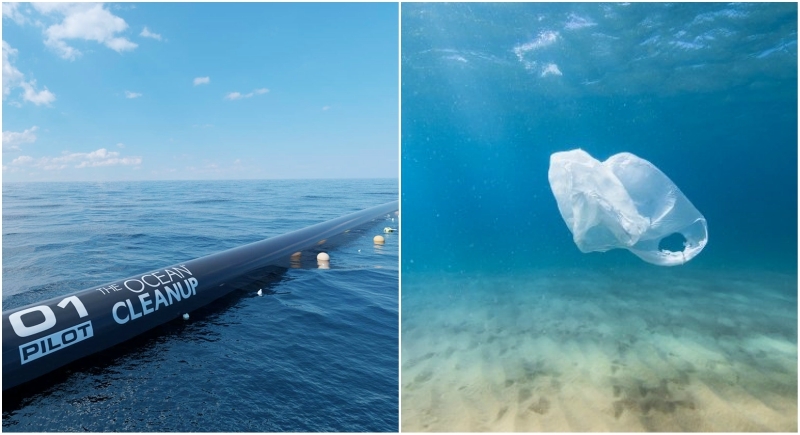World's 1st plastic collector device to be deployed in Pacific Ocean soon
Pacific, April 25: Our Earth is reluctantly becoming the victim to the monster called-plastic. Humans have created 8.3 billion metric tonnes of plastics since the early 1950s, and most of it now resides in landfills or the natural environment, a study has found.

In order to combat plastic pollution, the world's first passive plastic collection device is going to be deployed in the Pacific Ocean in an attempt to do something about plastic pollution.
Dedicated to removing debris from the oceans, the device will be set up between California and Hawaii in the Great Pacific Garbage Patch, a region with a high concentration of plastic pollution in the North Pacific Gyre.
It was designed by The Ocean Cleanup, a foundation created by Dutch student Boyan Slat at the age of 18.
The collector is easy to understand the concept. Long, durable polyurethane booms filled with air float on top of the ocean, slowed by anchors to keep the collector moving more slowly than ocean currents, which will sweep the plastic right into the collectors.
They're arranged in an open U shape, held in place with cables to maximise their catching efficiency and funnel the debris into a central holding tank.
Tightly woven nylon screens that marine life can't get tangled in hang from the boom to catch larger pieces of plastic swept along by ocean currents, to a depth of around 3 metres to collect debris - most of the pollution is at the surface, research conducted by the team found. Boats visiting the collection tanks will periodically clear out the plastics.’
According to The Ocean Cleanup's simulations, this system will be able to clean up half the Great Pacific Garbage Patch - around 36,000 tonnes of plastic debris - in a period of five years.
5 Gyres, a nonprofit organisation focused on reducing plastic pollution, noted that the collectors won't help in the reduction of microplastics, which can cause serious health problems when ingested by marine animals, including starvation because they have bellies full of material that's completely devoid of nutrition.
"The plastic pollution problem has always been portrayed as something unsolvable. The story has always been 'OK, we can't clean it up - the best we can do is not make it worse'. To me that's a very uninspiring message," Slat said. "We as a humanity created this problem, so I think it's our responsibility also to help solve it."
Initially, the first collector will be around 120 metres (400 feet) in length. If it works, it can be extended to around 620 metres (2,000 feet), with a long-term plan to put around 60 collectors in the gyre.